Wilderness Scotland guide Joe Mann stands in front of grouse moorland just outside of Cairngorms National Park in Scotland/Jennifer Bain
On the way back to Cairngorms National Park after a joyous day at the seaside filled with grey seals, wading birds and dunes, tour guide Joe Mann pulls the van over and asks us to get out and stand along the highway. He gives us a minute to absorb the Scottish landscape before posing what is clearly a loaded question.
What do we think of this grouse moorland, one of countless private estates across the country where people come to shoot Red grouse in the wide open fields of heather?
“Peaceful, but a little bleak, I’d say,” offers Debbie Robson, a Brit and one of three guests on a scenic walking trip with Wilderness Scotland.
“Yeah, bleak,” agrees Carl Broomhead, who is also from England.
I have no idea what to say, since it’s a dreary March day on this Canadian’s first trip to Scotland and I’m pretty sure the muted heather moors will soon transform into a stunning purple and pink carpet. The silence is eerie, though. A few sheep graze in the distance but we don’t see or hear grouse — or anything else for that matter.
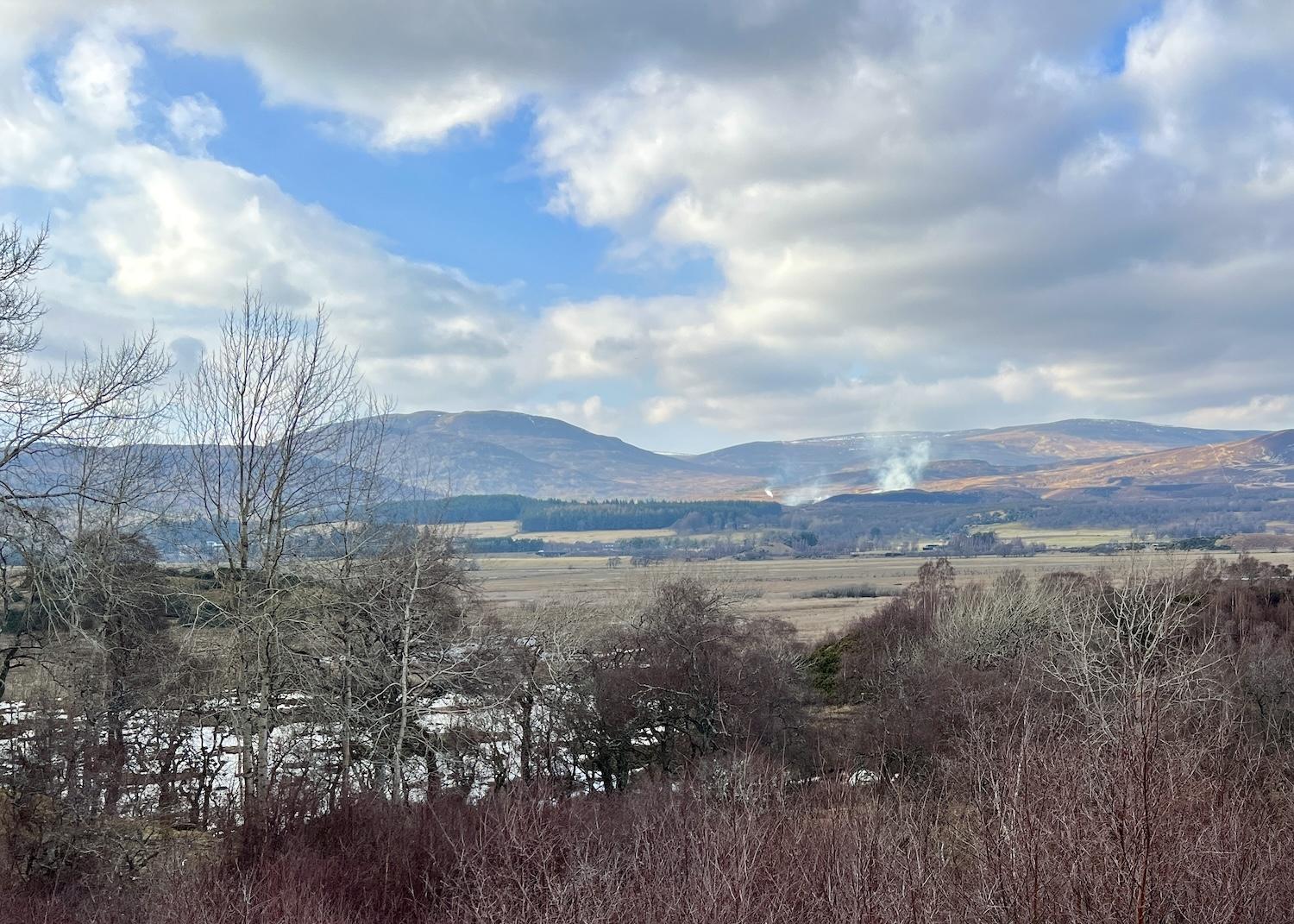
From Insh Marshes, we spot someone burning heather to create new green shoots to feed red grouse/Jennifer Bain
“This, to me, is a desolate wasteland,” says Mann, becoming uncharacteristically grim. “It’s a monoculture. It’s heather and poor grass and there’s nothing really thriving here.”
Grouse moors, he explains, are intensely managed through burning to produce new green shoots to feed the game birds. Estate owners were traditionally allowed to exterminate birds of prey and other predators that might harm lucrative hunts, and so killed obscene amounts of wildlife in the last century. Some gamekeepers still do this illegally.
And yet, when most people visit Scotland, they can’t wait to see heather moors in full summer bloom.
“We celebrate these grouse moor estates as being natural and outdoors and wild, when they’re really not — they’re anything but,” laments Mann. “They’ve been completely restrained by us.”
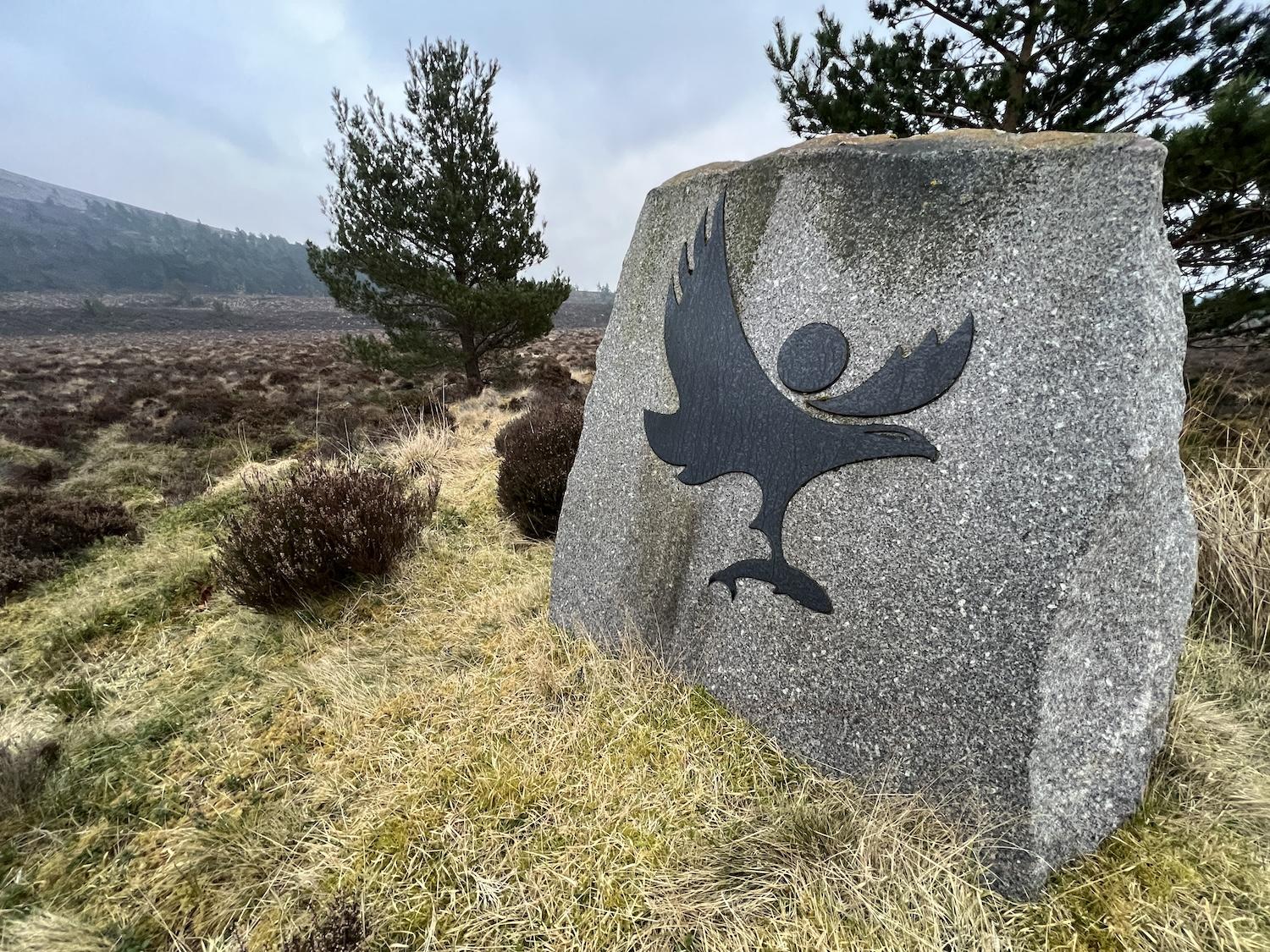
A stone showing an osprey and fish marks the border of Cairngorms National Park in Scotland/Jennifer Bain
We climb back in the van, sobered by this disturbing perspective but also mindful of important rewilding work we’ve witnessed inside the park.
Rewilding Britain says rewilding is the “large-scale restoration of nature until it can take care of itself — and us — again.” It’s about tackling the climate crisis and the extinction crisis by restoring habitats, processes and sometimes even missing species.
As the Scottish Rewilding Alliance puts it, “rewilding is a simple idea. Let’s work with nature instead of against it.”
The alliance calls Scotland one of the most “nature-depleted countries on earth” but is lobbying for it to transform into the world’s first “rewilding nation.” That means rewilding at least 30 per cent of the country’s land and seas and reintroducing keystone species like beavers and lynx.
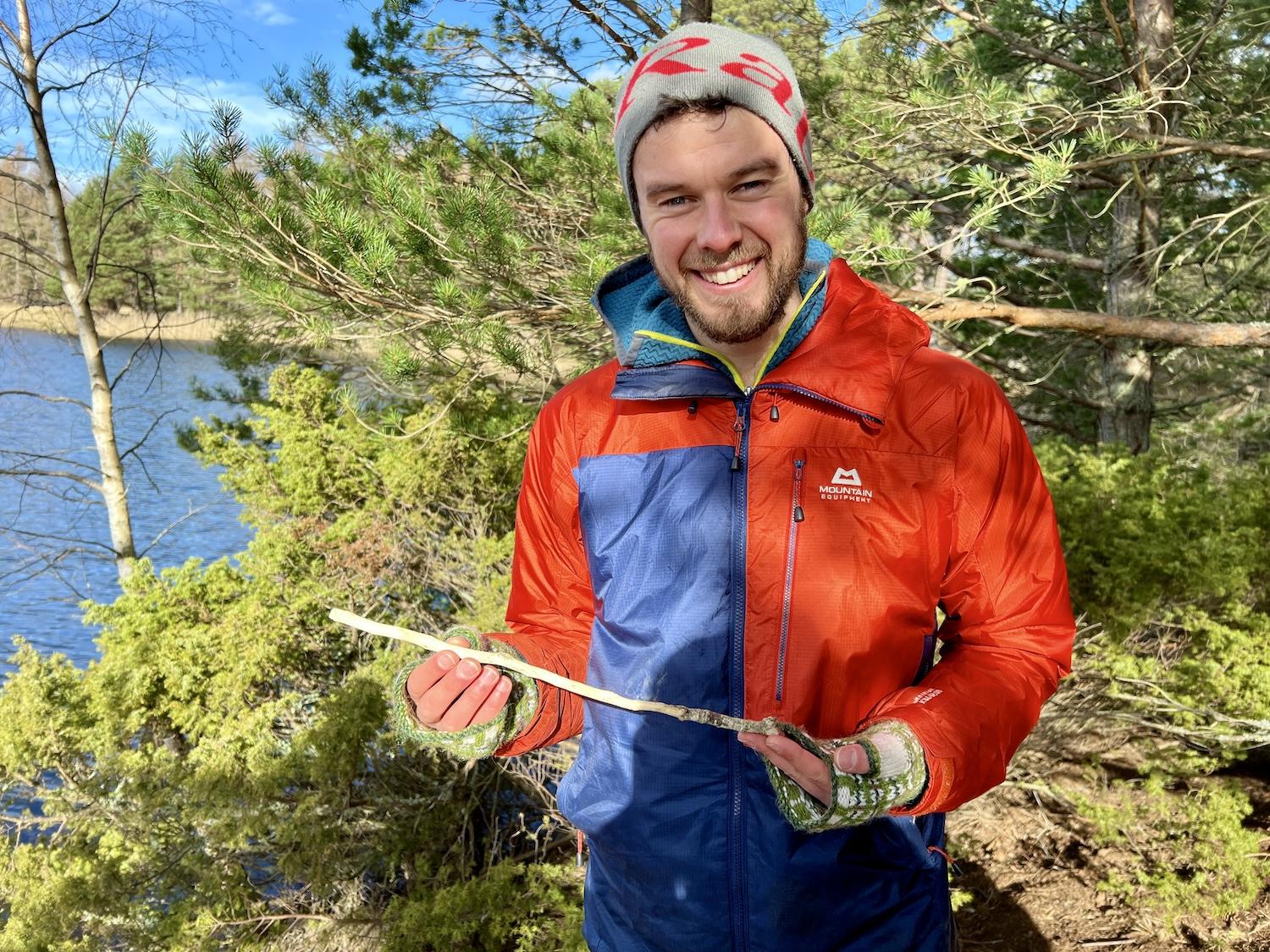
Wilderness Scotland guide Joe Mann shows off a beaver stick in Rothiemurchus, an area of Cairngorms National Park where beavers have recently been reintroduced to great fanfare/Jennifer Bain
“Imagine a Scotland where nature is reawakened,” the alliance suggests, “where a rich tapestry of native woodlands, wetlands, wildflower meadows and grasslands is stitched back together.”
I can imagine it, thanks to my four-night “Winter Wildlife” trip with Wilderness Scotland, which offers guided and customized adventure holidays in the country’s Highlands and islands. Using Newtonmore as our base, we walk through multiple ecosystems in and near the Cairngorms.
I’ve already raved about the coastal day around the Findhorn Bay Local Nature Reserve, and I’ve written about meeting the United Kingdom’s only free-ranging reindeer herd on our mountain day, when we also spot Snow buntings.
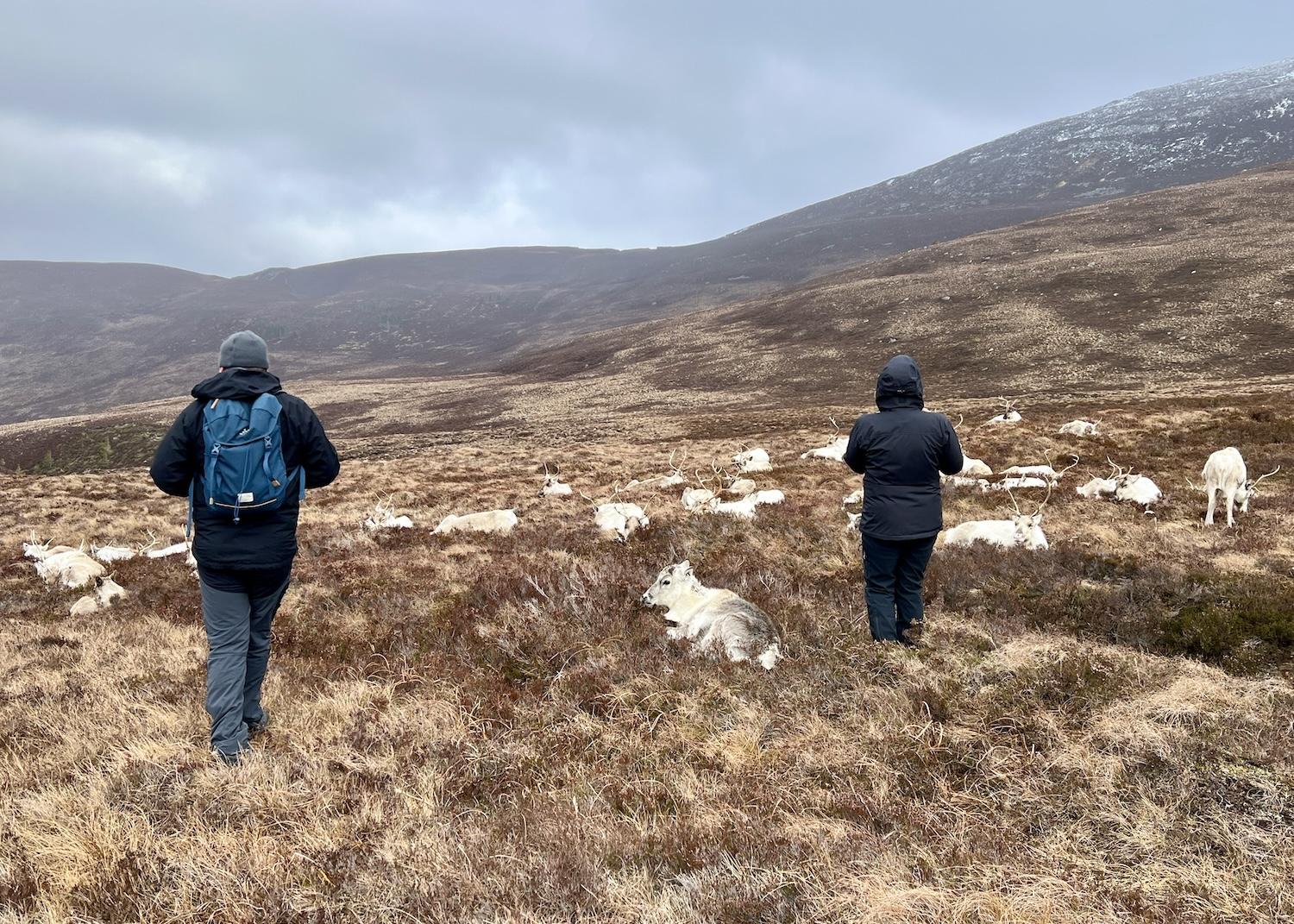
Wilderness Scotland guests Carl Broomhead and Debbie Robson meet the Cairngorm Reindeer Herd/Jennifer Bain
On the afternoon devoted to marshlands and floodplains, I see Whooper swans plus Oystercatchers and Greylag geese feasting in fields filled with molehills.
On the day to celebrate forests and woodlands, I see evidence of beavers that have recently been reintroduced to the area to great fanfare — gnawed tree branches and stumps. I see a rare Green-winged teal mixed in with Eurasian teals, Goldeneyes and nesting boxes to help them breed, Scots pine forests and a Scottish wood ant nest.
On a night hike near Newtonmore, I catch glimpses of roe, red and Sitka deer, a mountain hare and a Barn owl.
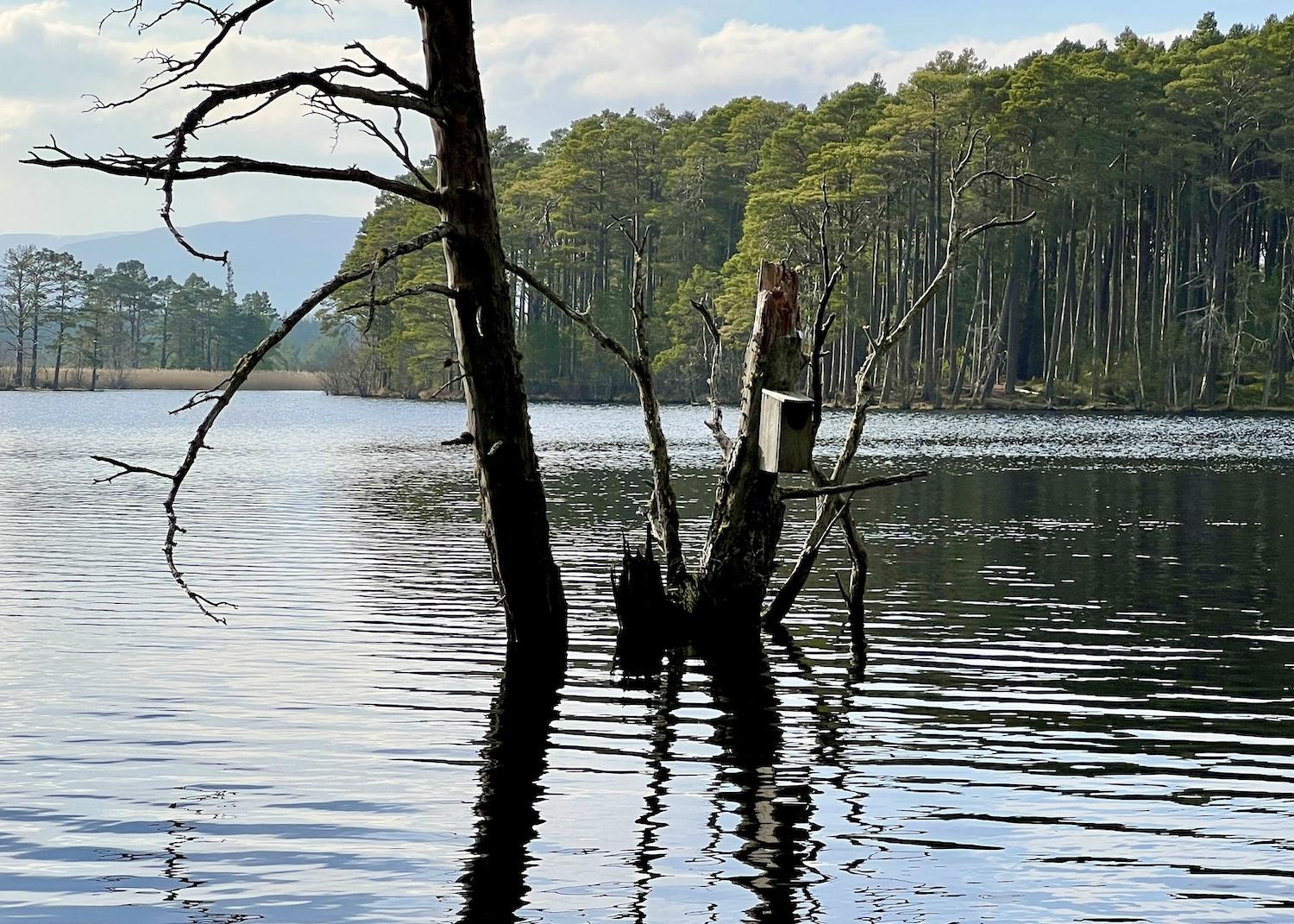
On Loch Mallachie in the Abernethy National Nature Reserve, a nest box awaits Goldeneyes/Jennifer Bain
While walking along the River Spey to learn how salmon is a keystone species, we spot Scottish crossbills and let ourselves in and out of farm fields full of blackface sheep. (Scotland gives everyone the “right to roam” most land for responsible, recreational reasons.)
“We do these wildlife trips and a lot of people say `Oh we don’t see any wildlife, really,’” confides Mann. “Well, it’s just starting to make a recovery now. All our eagles, all our raptors, hen harriers and osprey were driven to extinction or near extinction. Same with our foxes, badgers, pine martens and Scottish wildcats. And we absolutely don’t acknowledge it.”
Of course, we don’t see all the wildlife we hope to, but enjoy gawking at pine marten poop and empty osprey nests. We are on high alert for Black grouse and Capercaillie (the largest game bird) but they prove elusive.
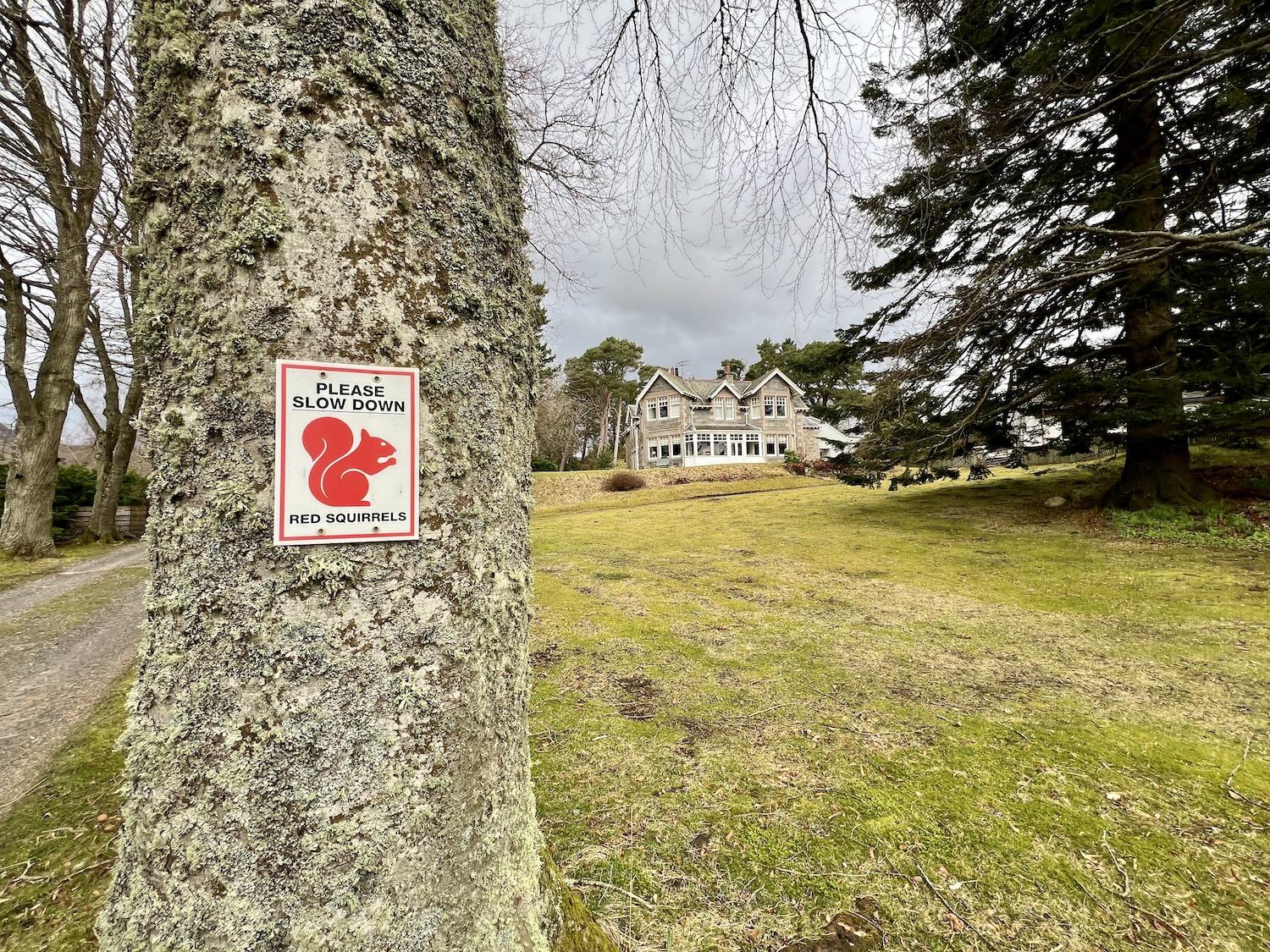
At Coig na Shee guest house in Newtonmore, a sign implores guests to drive carefully to protect red squirrels/Jennifer Bain
There are signs everywhere — including the driveway to Coig na Shee guest house where we stay — urging motorists to slow down and save imperiled red squirrels, but I only catch a fleeting glimpse of two of them chasing each other up a tree.
Mann aims to please, though, and so when he asks what we each hope to get out of this trip, I ask to see a Highland cow with its long shaggy coat and long horns — even though it doesn’t count as wildlife.
At the Castle Roy ruins near Nethy Bridge, this small dream comes true when we meet Murdo the itchy, drooly, friendly and photogenic “Heilan’ coo.”
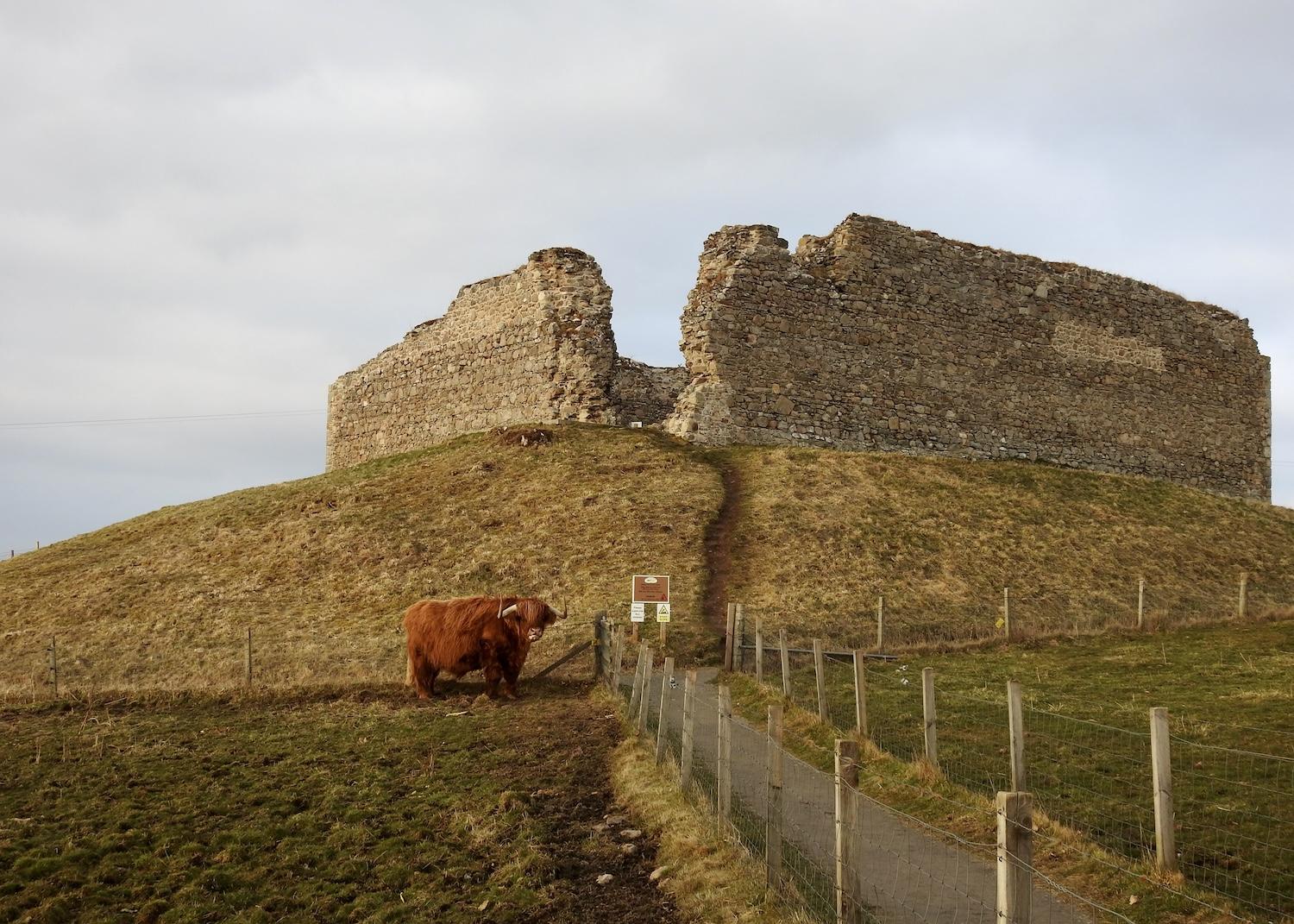
Murdo the Highland cow is a popular attraction at the Castle Roy ruins/Jennifer Bain
It’s hard to wrap my head around the fact that this park is not like American and Canadian national parks. There are no gates or entry fees, but 18,000 people live in towns and villages spread across the Cairngorms, and another two million people visit every year.
Created in 2003, the Cairngorms is the largest park in the UK, boasts four of Britain’s five highest mountains and its biggest native forests, plus rivers, lochs, moorland and farmland. It’s full of areas of conservation, special protection areas and national nature reserves. The Cairngorm plateau — where we feed the Cairngorm Reindeer Herd — boasts arctic mountain terrain.
“In Scottish, and particularly British, terms, it’s a unique landscape,” allows volunteer ranger Robin Forest. “It’s not a landscape, or habitat, that’s found anywhere else in the British Isles. It’s more like parts of Scandinavia.”
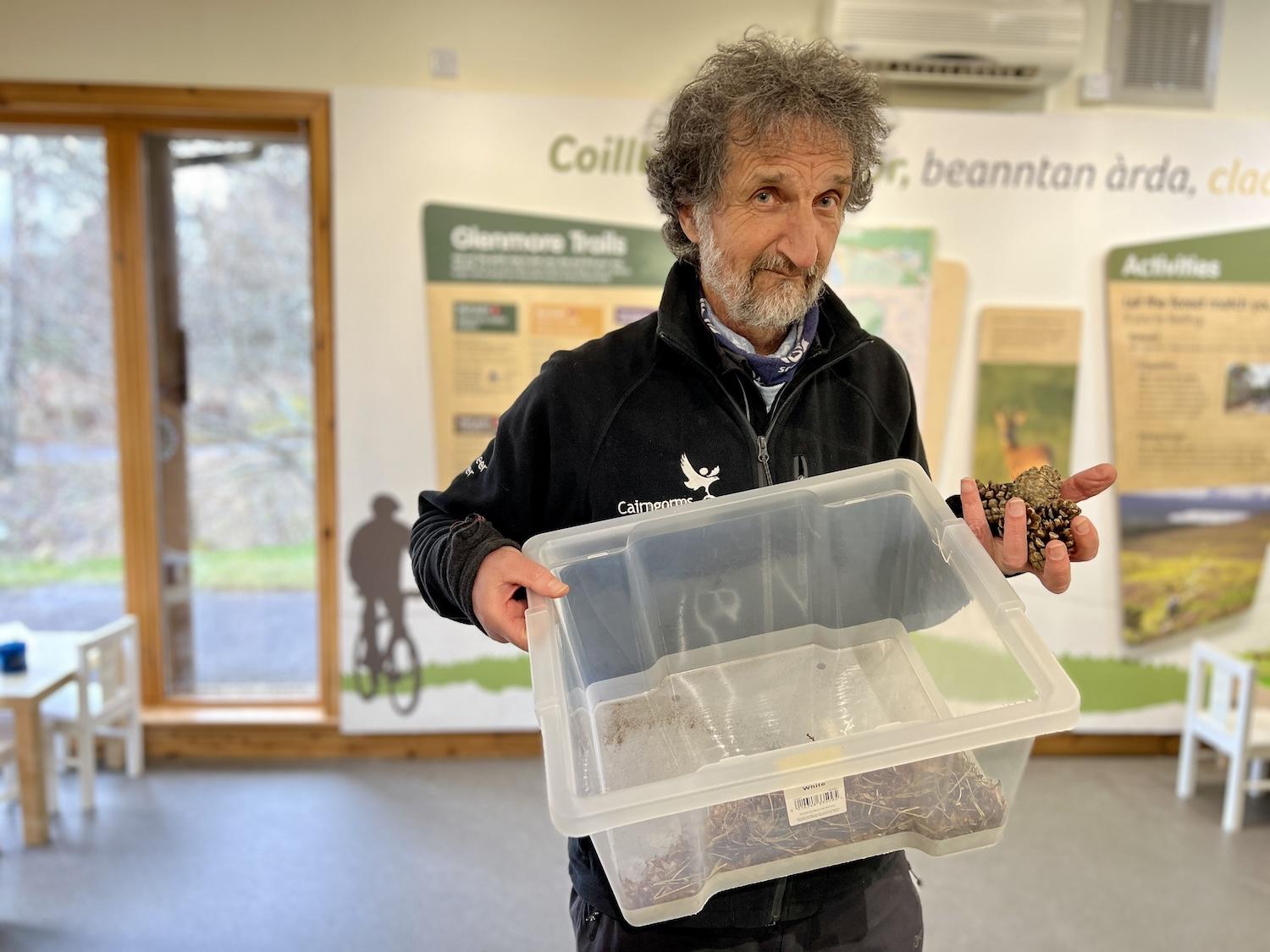
Cairngorms National Park volunteer ranger Robin Forest separates seeds from pine cones in the Glenmore Visitor Centre/Jennifer Bain
As we talk, Forest shakes a box of Scots pine cones to separate the seeds that will be soon mixed with sand and planted nearby. He works for Cairngorms National Park in the Glenmore Forest Park Visitor Centre run by Forestry and Land Scotland.
At the Insh Marshes National Nature Reserve within the park, David Hull is a warden with the Royal Society for the Protection of Birds. It’s too early for butterflies, but he shows us the best spots to see them in spring and enthuses about rare aspen hoverflies and dark bordered beauty moths.
When I find a dead dor (dung) beetle, he praises its cobalt blue undersides and the way this creature feeds on animal droppings. “When you stop and think about what they’re doing, they’re cleaning up for us aren’t they? They’re cleaning up the poop and they’re burying it. They’re part of the tidying up gang, so they’re definitely on the side of the good guys.”
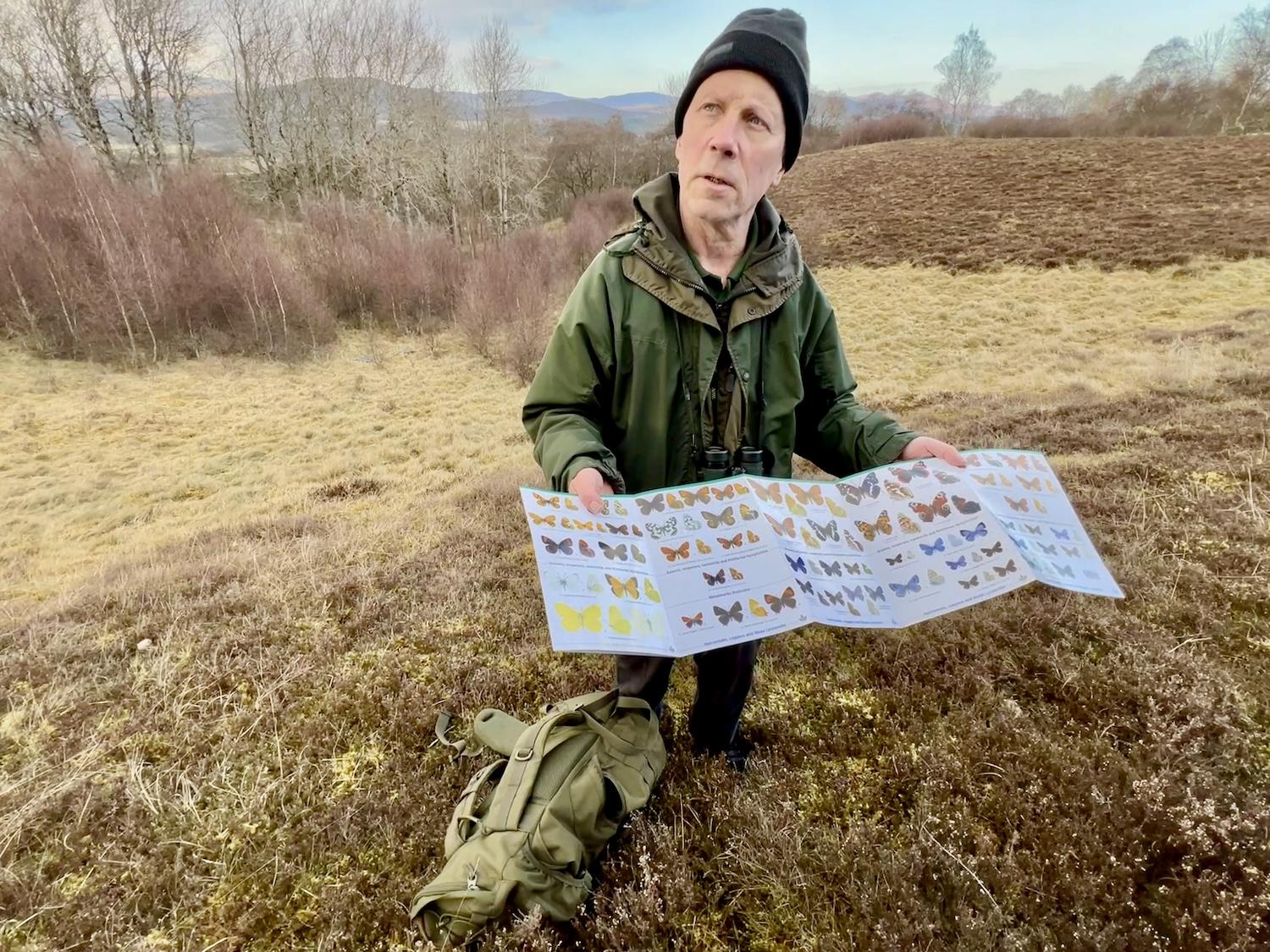
David Hull, a warden with the Royal Society for the Protection of Birds, talks about the butterflies you’ll find at Insh Marshes National Nature Reserve/Jennifer Bain
Who doesn’t crave this kind of nature intel when traveling?
Then there’s our intrepid guide. Mann has an outdoor leadership degree, doubles as a seasonal reindeer herder and is an avid birder who lives beside the Glenmore Visitor Centre and does bird surveys for private clients when he’s not guiding.
He talks a lot about Cairngorms Connect, a partnership of neighboring land managers committed to a 200-year vision “to enhance habitats, species and ecological processes” across a swath of the Cairngorms. He raves about the conservation work Wildland is doing through custodianship of three significant estates in the Scottish Highlands.
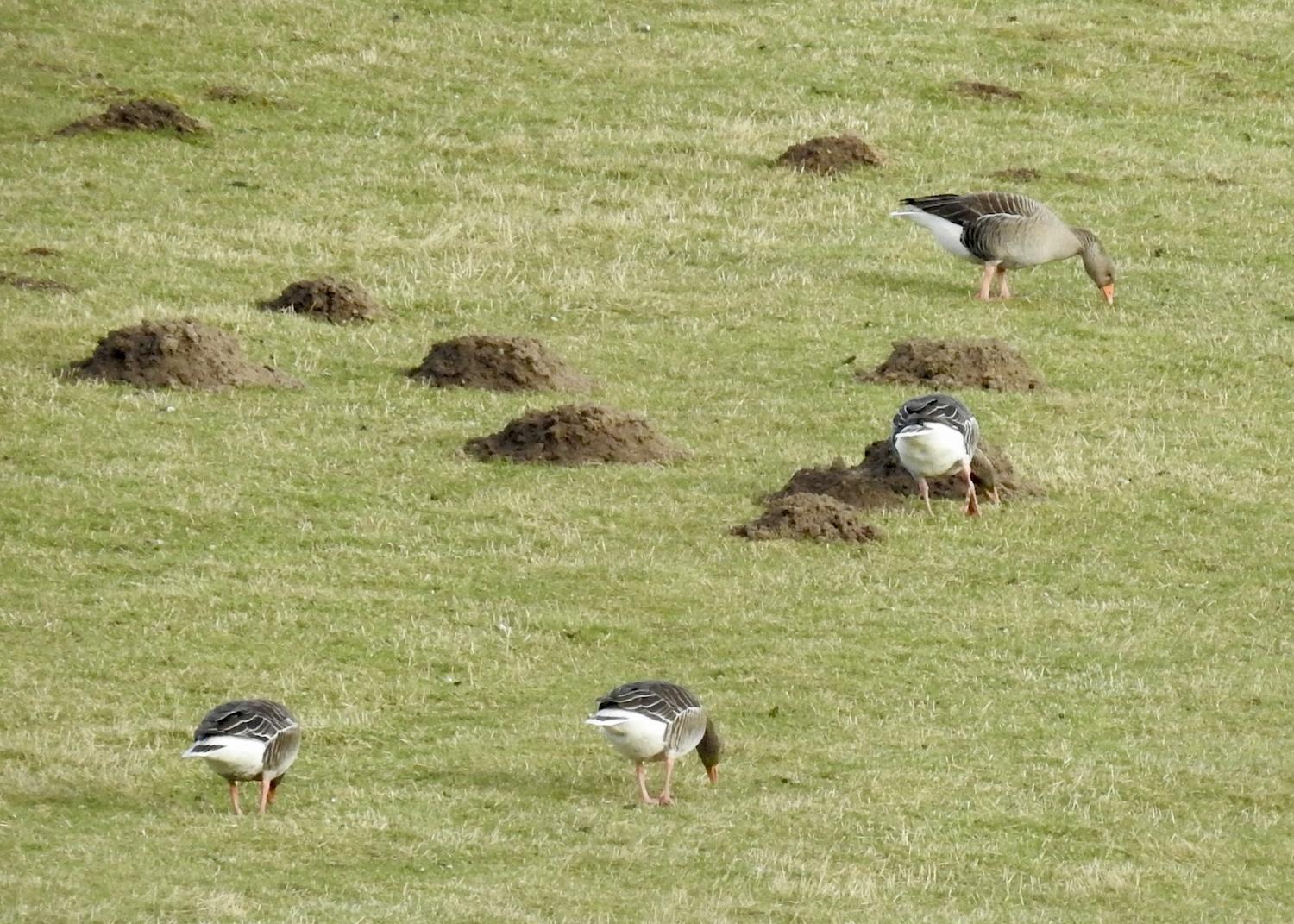
Greylag geese feed in a field full of molehills near Insh Marshes/Jennifer Bain
But when I fixate on something as seemingly minute as a molehill, Mann is just as eager to paint a vivid picture of how the solitary mammals burrow tunnels and then “just lap them constantly” looking for worms.
After showing us Scots pines in Abernethy National Nature Reserve, Mann leads us to a thigh-high ant nest and explains how complex it is.
“It’s nice to have a quick stop and celebrate the Scottish wood ant,” he says.
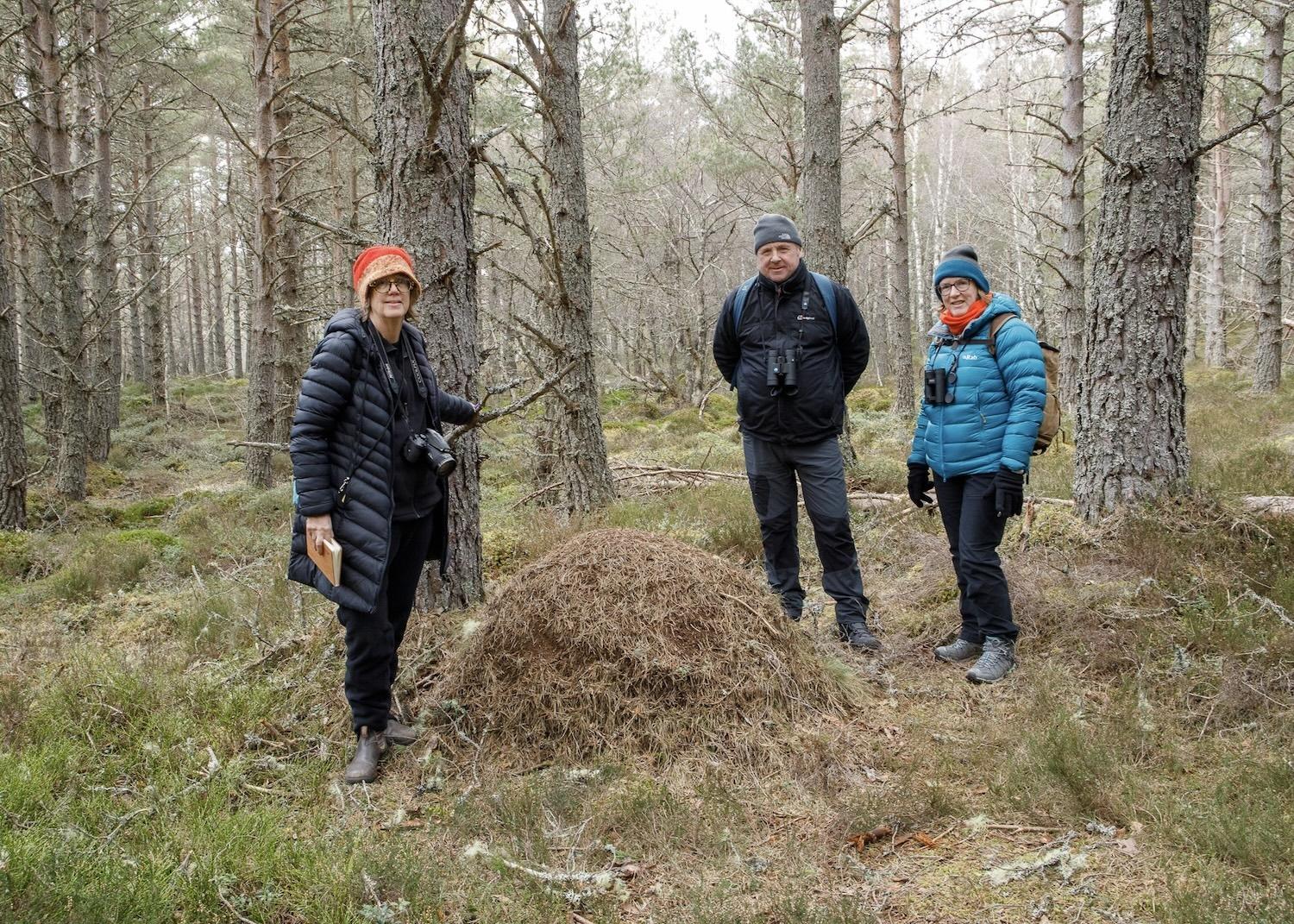
Wilderness Scotland guests Jennifer Bain, Carl Broomhead and Debbie Robson stand by an enormous Scottish wood ant nest in the Abernethy National Nature Reserve/Joe Mann
At that moment, I realize that my hiking trip with a wildlife theme is actually a celebration of biodiversity through mindful walks.
Of course, there are plenty of dark moments on our explorations because nature is messy and people have different personal and professional priorities.
In Abernethy, we scrutinize the gorgeous Scots pine forest and realize the trees all about the same age and that this forest lacks young and diverse trees and all-important deadwood.
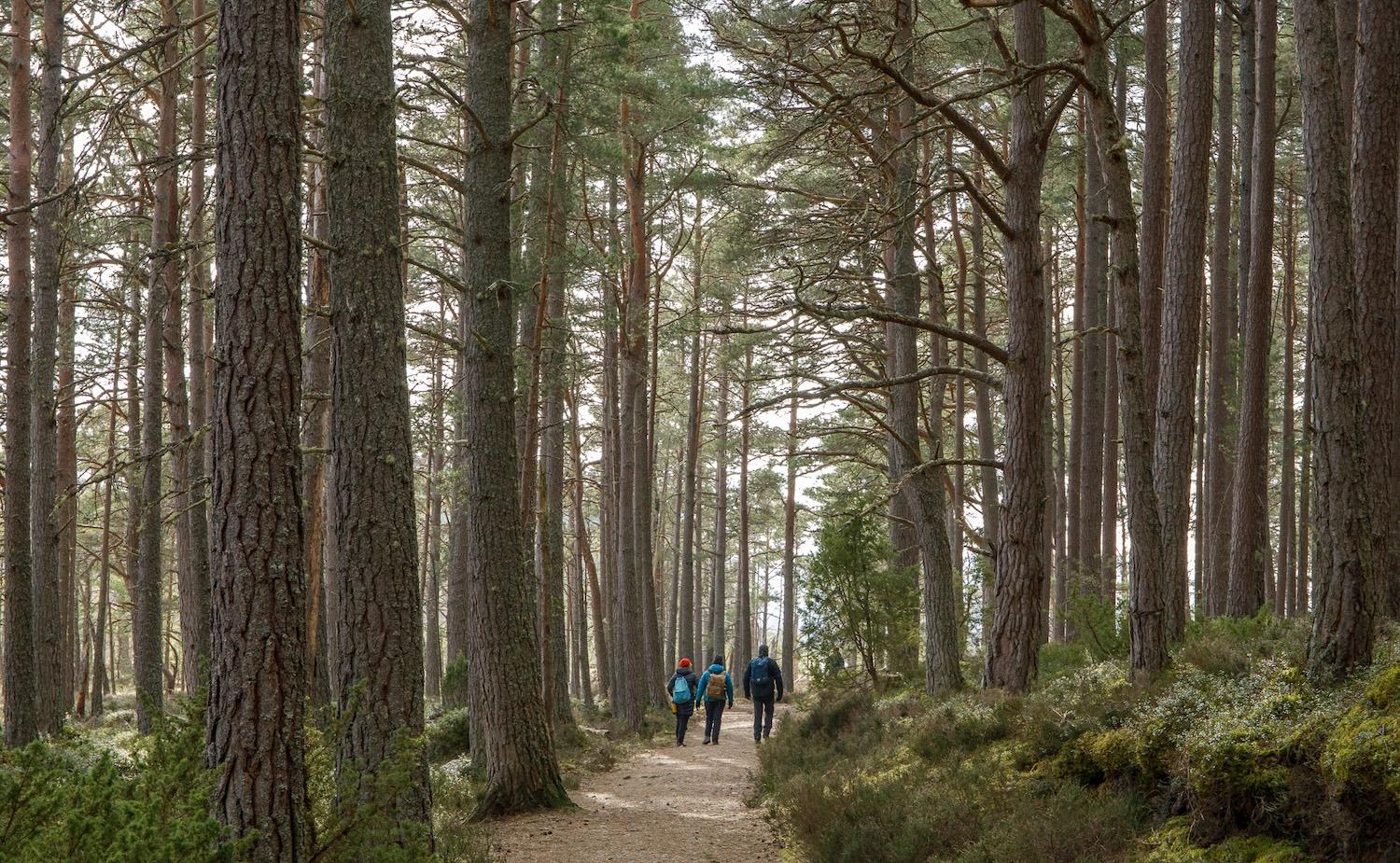
Wilderness Scotland guests Jennifer Bain, Debbie Robson and Carl Broomhead walk through the forest at Abernethy National Nature Reserve/Joe Mann
When we park by Loch Morlich and set off on foot down a rough, unpaved road in Glenmore Forest Park, Mann confesses he used to run here and was devastated one day to find what looked like a “very messy, very ugly” tree massacre.
He discovered that the land — a tree plantation — is now being rewilded with Cairngorms Connect. But mature trees still need to be logged to make money and room for new growth. “Unfortunately, it’s a scar on the land,” says Mann, “but it’s the last scar we’re going to see here.”
Now he’s seeing Crossbills, Crested tits, Black grouse and Capercaillies here for the first time feeding on land that’s starting to offer up “a buffet of high-quality food.” This is where those pine cone seeds we saw at the visitor center will soon be planted.
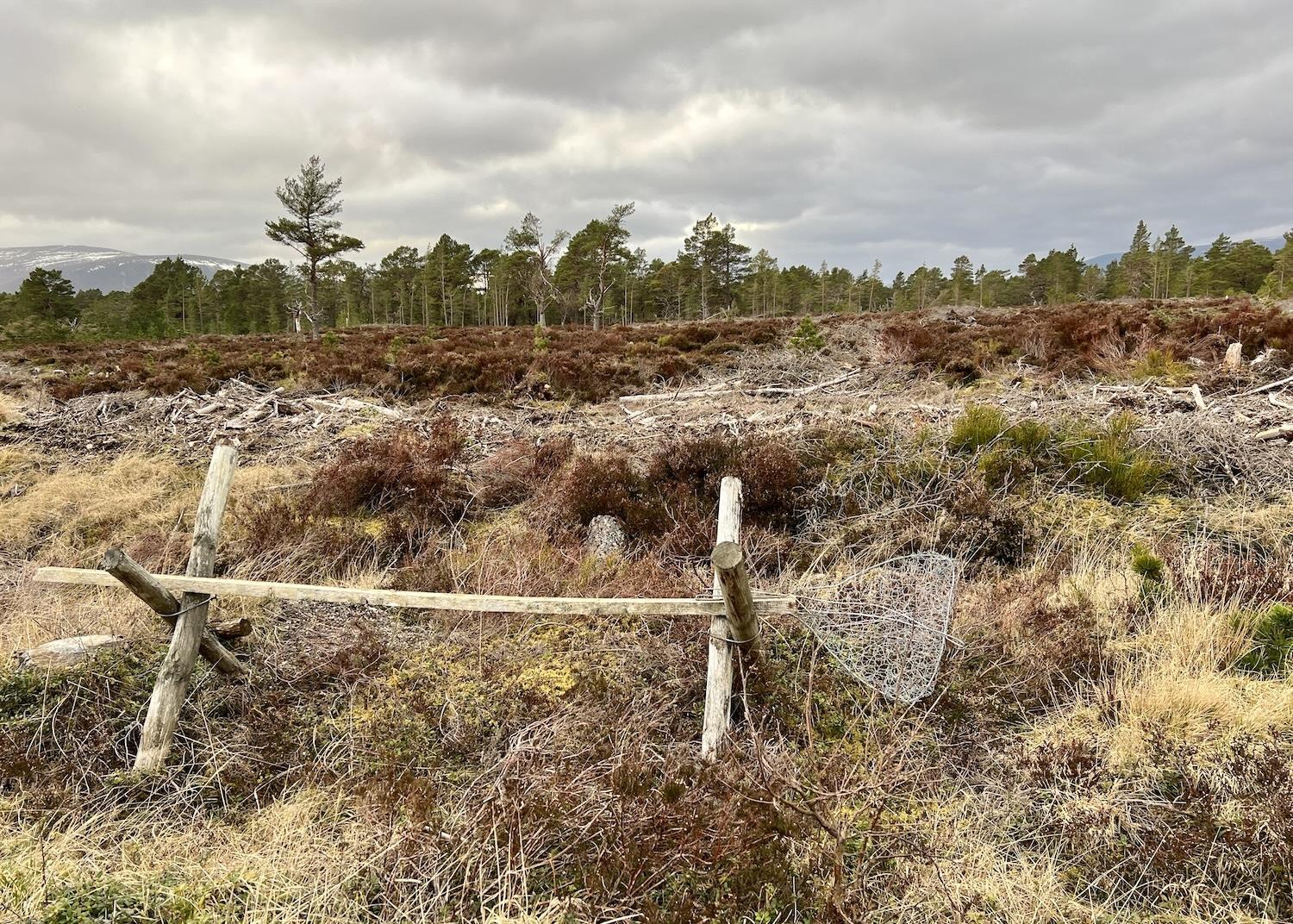
A fire beater is spotted along the road in Glenmore Forest Park in a heavily logged area that’s slowly being rewilded/Jennifer Bain
It’s quiet on this strange stretch of road, but not bleak like at that grouse moorland spot along the highway.
We find some false morels and photograph a long-handled fire beater traditionally used to fight fires in the countryside.
When we return to the parking lot having struck out yet again on the Capercaillie and Black grouse front, there’s a delightful consolation prize. It’s a Pied Wagtail, a vivacious black, white and grey bird that feeds on easy pickings are really does wag its long tail.
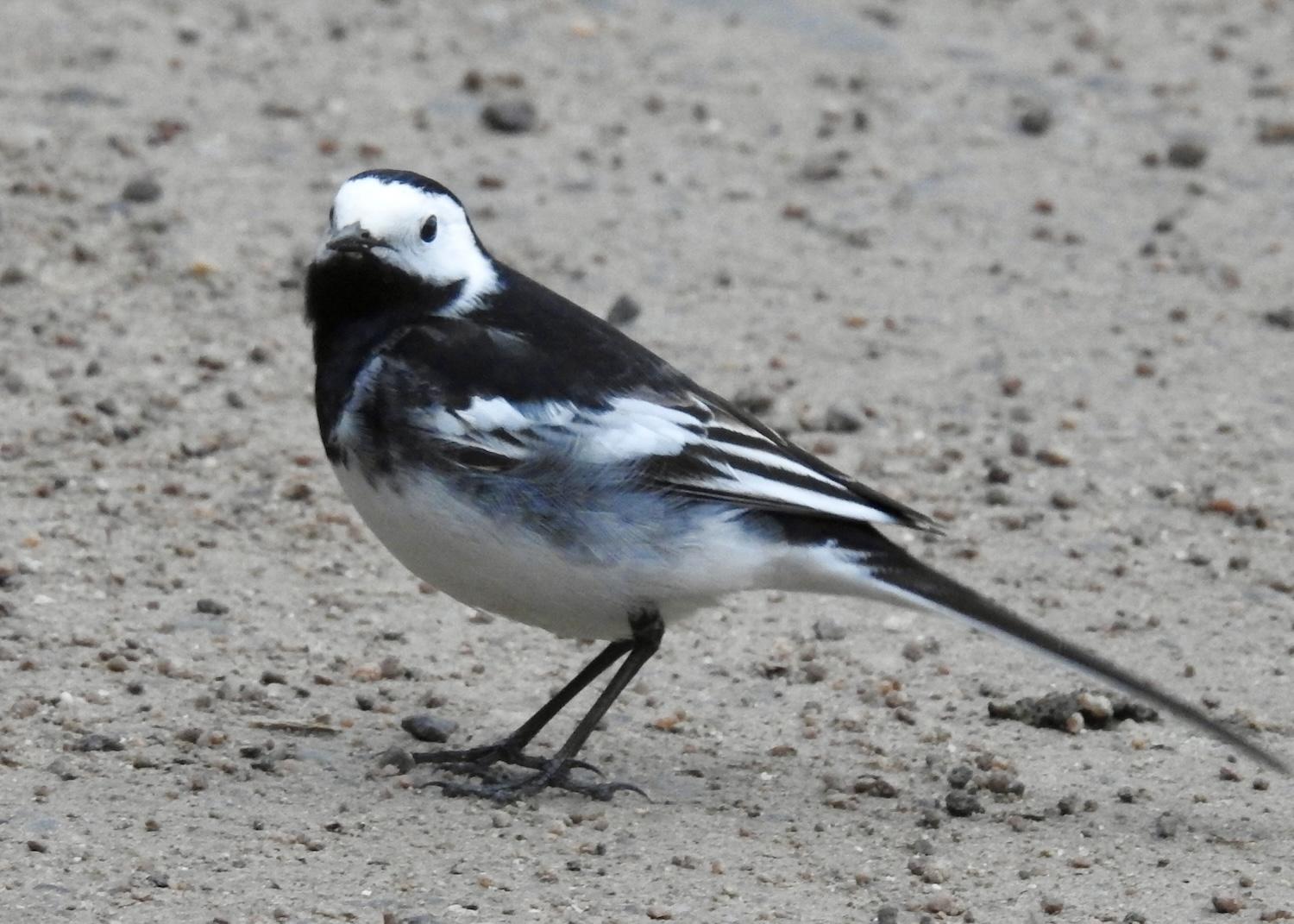
A cheerful Pied Wagtail looks for food in the Loch Morlich parking lot in Cairngorms National Park/Jennifer Bain
“Birds are just something that’s always there,” muses Mann. “That’s why I got into birds — so there’s always some sort of connection to something living.”
Scotland’s mammals, on the other hand, tend to be elusive because they’ve been persecuted for so long and because so much of their habitat has been turned into “rich people’s playgrounds” where the goals are to fish, hunt grouse and shoot deer.
Which brings us back to those grouse moorlands. Like many, Mann believes this precious land “is literally in a coma” but could one day be full of trees and healthy river systems, with beaver-filled wetlands and thriving wildlife. He’s eager to help make that happen.
“I love the Cairngorms,” he concludes. “And I just want people to go away loving the Cairngorms, too.”
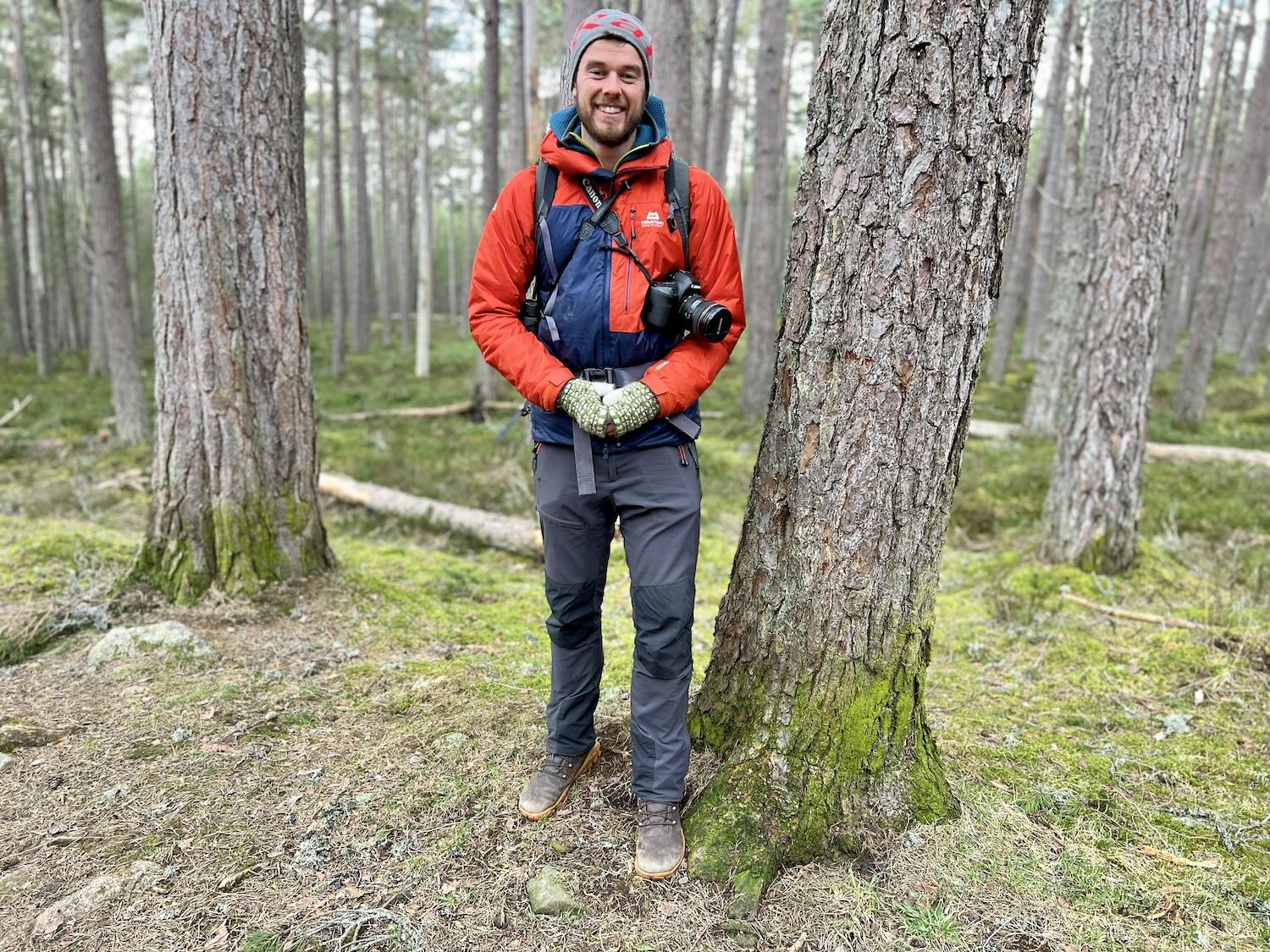
Wilderness Scotland guide Joe Mann stands in the Carolinian pine forest of Abernethy National Nature Reserve/Jennifer Bain





